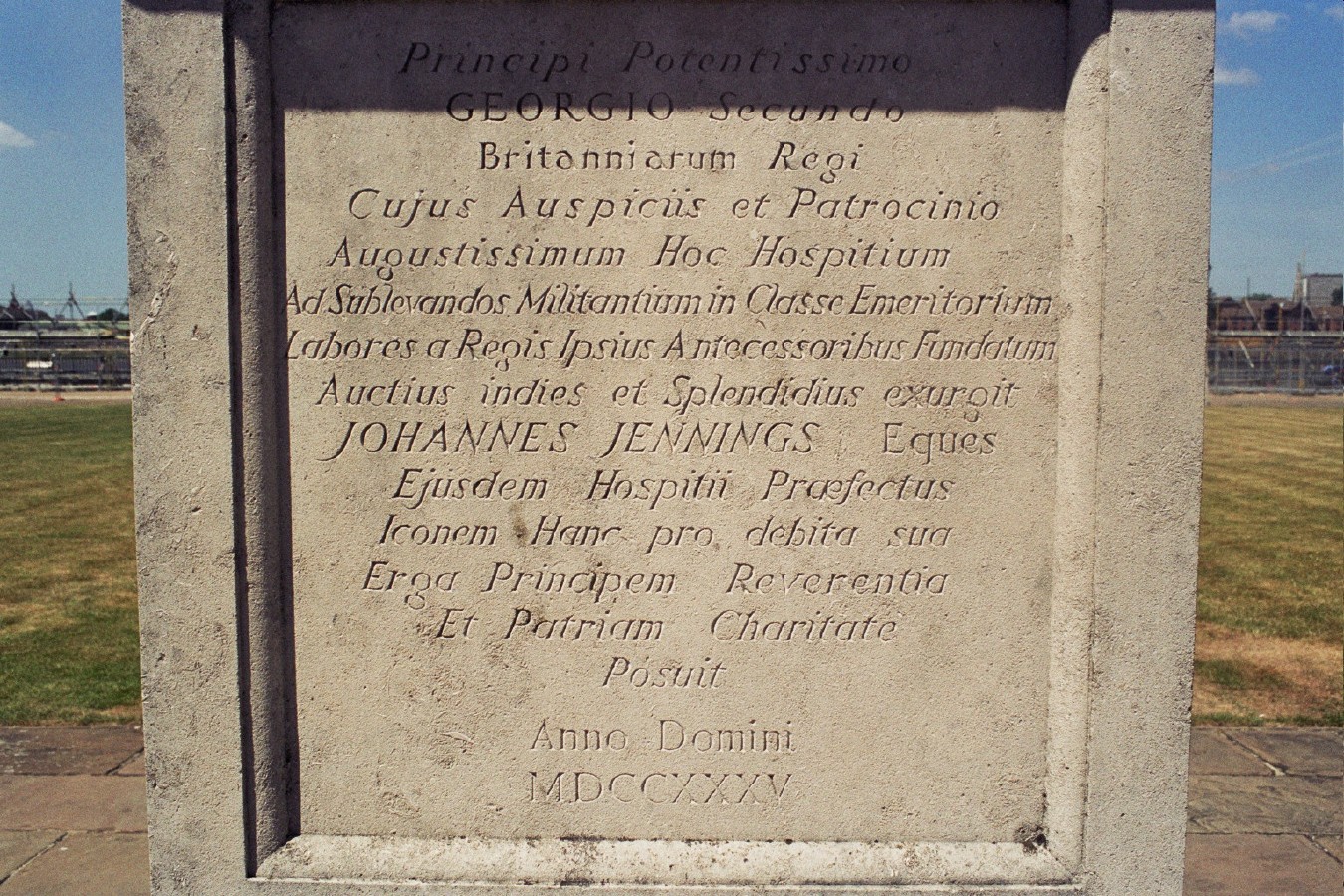Queen Caroline








"NPG 2013 corresponds with the undated marble at Windsor incised L.F.Roubiliac sc. ad Vivum and must be the model. Mrs Esdaile places it possibly circa 1748 but more probably from the last years of the sculptor's life.
Roubiliac died 1762. Ligonier received the Bath in 1743 but sittings would have been difficult before the end of the war, 1748.
In 1926 W. T. Whitley discovered a contemporary reference to 'A Bust' of the sitter exhibited by Roubiliac at the Society of Artists 1761 (153) and an entry 3 February 1763 'To paid Mr Roubilliacs bill for £153 11s’has been found in the regimental account kept by Ligonier's agent Richard Cox. [2]
The payment, which must have been to the sculptor's estate, has been taken to refer to the Windsor marble, but unfortunately the supporting personal ledger where details might have been expected cannot be traced. [3]
Mrs Esdaile believed the marble was a royal commission;
this is prima facie evidence to the contrary. Furthermore, according to
Benjamin Justham, inventory clerk to George IV, the Roubiliac busts of Ligonier
and George II were presented, 27 June 1817, by a Thomas Lloyd of 112 Gloucester
Place, London. [4]
Four plasters and a mould of the bust were in the Roubiliac
sale of 1762, lots 11 and 47 of the 1st day, lot 4 of the 3rd day and lots 9
and 17 of the 4th day. [5] These have since disappeared.
Condition: cracks at the base of the shoulders and in front,
below the star of the Bath and in the fur above the centre line of the
breastplate, have been repaired; an area at the edge of the collar on his left
shoulder has been painted in; the tip of his left shoulder is damaged at the
back; a few small areas of white visible in some of the valleys of the wig;
19th-century(?) rose-coloured plaster socle now faded.
2. Letter, The Times, 28 December 1926, unpublished, NPG
archives.
3. '1st Foot Guards Viscount Ligonier', f.137, archives of
Messrs Lloyds Bank (Cox & King’s branch). Kindly verified by Mr M.A.
Clancy, cp Whitworth, p.380 and note 2.
4. G. de Bellaigue, letter, 30 March 1972, NPG archives.
5. Esdaile, pp.219-27. [6]
Mezzotint.
by John Brooks, after James Latham.
published mid 1740s-mid 1750s.
-----------------------------------
The Socles Roubiliac's Busts of Ligonier and George II.
in the Royal Collection.
https://pssauk.org/about/trustees/
- In a recent Art UK conference hosted by Holly Trusted of the Art UK Sculpture Steering Group Malcolm Baker gave a presentation on the socle in English Eighteenth Century Sculpture in which the busts of George II and Ligonier figured prominently.
The main thrust of the talk was to highlight the way a socle affects the viewing of a portrait bust - something that I have pondered ever since starting this research project over twenty years ago.
Malcolm Baker discusses the original position of these two busts in a pair of niches in what had been the home of Ligonier since 1730 at what is now 12 North Audley Street, Mayfair.
"Probably executed about 1760 and perhaps connected with Lord Ligonier's elevation to the peerage. These were almost certainly commissioned by Lord Ligonier himself. Payment of £153, an unusually large sum for two busts was recorded in the general's regimental accounts on the 12th February 1763. actually after Roubiliac's death, Lord Ligonier was a late payer obviously. Then in 1817, the two busts were presented to George V by Lord Ligonier's descender Thomas Lloyd.
By the late 1820 both busts were displayed at Windsor
where all the busts were placed on new circular socles, so as to form a
harmonised display".
Although the socle for Lord Ligonier's own bust does not survive, that for George I. Has happily been brought to light in the course of Jonathan Marsden's work on his catalogue of sculpturing in the royal collection.
............. his town house in Mayfair survives with its interiors intact. At the rear was an impressive gallery described as perhaps the most beautiful early Georgian roof surviving in London. This was probably designed between 1728 and 1730 by Sir Edward Lovett Pearce, best known for the Irish Houses of Parliament in Dublin.
At each end they are just the right size to accommodate the unique busts and their unique socles rather than the niches being designed with the bust in mind it was the other way round. You have the bust and the gallery. So the busts were executed about 1760 to fit within the interior design some 30 years earlier.
....... This may have prompted the effect of grandeur that makes these two busts exceptional. Did Lord Ligonier ask for busts with the panache and presence appropriate to this grand room? More than that, however, Roubiliac was evidently taking account not only of the scale of the niches but also of the other decorative features of the interior. Here I suggest lies the explanation for that unusually shaped cartouche. It may be atypical for Roubiliac but corresponds exactly with the shape employed in the centre of the room's chimney piece, perhaps the volutes that we see on the chimney piece"
The Gallery 12 North Audley Street
https://www.british-history.ac.uk/survey-london/vol39/pt1/plate-11